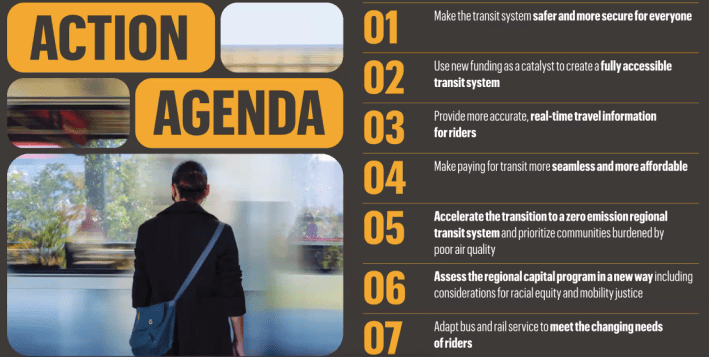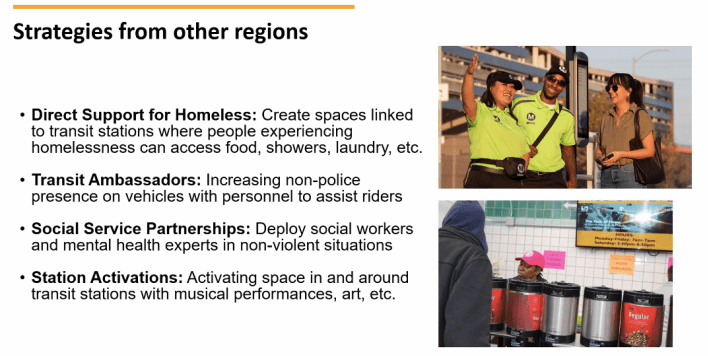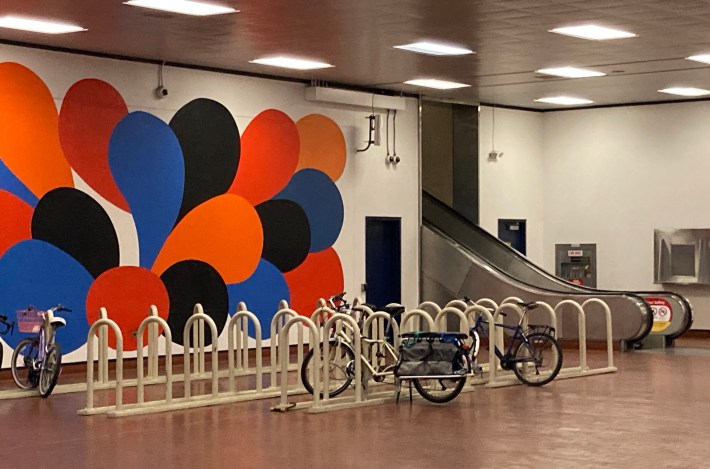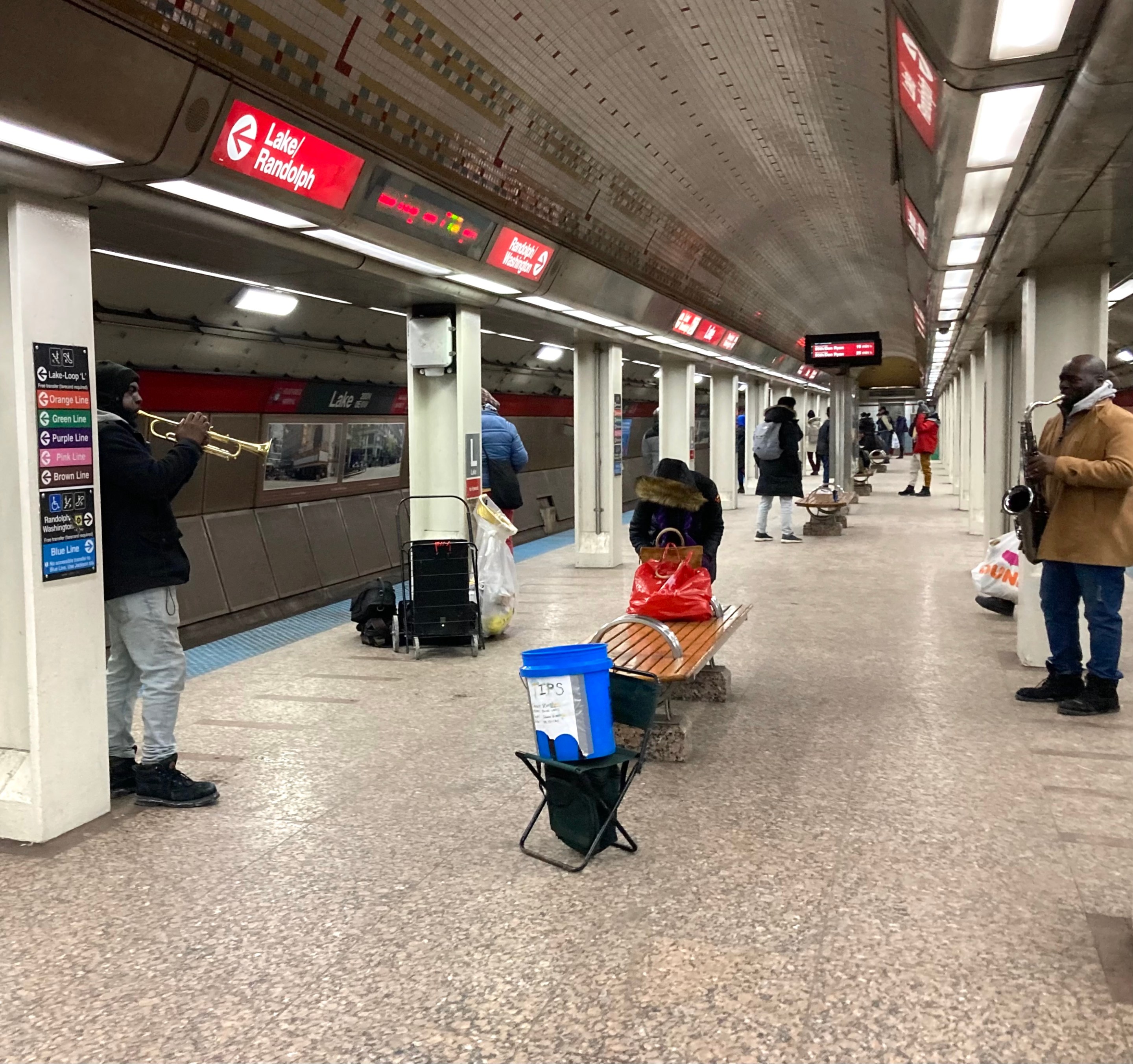
This post is sponsored by the Active Transportation Alliance.
On Tuesday, the Regional Transportation Authority – which oversees CTA, Metra, and Pace – held a virtual community meeting to gather feedback on how to improve safety and security across the three systems. Over 100 people attended to give input on how the agency should address actual and perceived safety issues on trains and buses – particularly on CTA, which continues to suffer from pandemic-induced ridership loss, staffing shortages, and service gaps.
Looming above all conversations about local transit is an impending $730M budget shortfall anticipated in 2026, when federal Covid relief funding runs out. In a recent blog post, RTA noted that additional funding would help local transit agencies address root causes of security problems with increased staffing and services.

The meeting was the second in a series of quarterly conversations around RTA’s five-year strategic plan, entitled “Transit is the Answer.” The plan lays out seven action areas for the umbrella agency, the first being “make the transit system safer and more secure for everyone.” At Tuesday’s meeting, Tish Williams, a strategic plan manager at RTA, said safety repeatedly came up as the top concern from riders and stakeholders during the “Transit is the Answer” planning process. Attendees were encouraged to read Katie Prout’s beautifully written account in the Chicago Reader of how a rider successfully deescalated an unsettling incident on a Red Line train.

Wiliams first listed recent safety and security measures taken across the three service providers, including installation of 2,000 security cameras at 60 CTA stations, increased station check-ins by Metra police and a contract for 50 K-9 security patrols on CTA. Streetsblog has questioned whether the efficacy of K-9 units justified the $31M price tag. Williams also noted that clean, well-lit stations in good repair instill a sense of safety in transit users.
RTA program manager Peter Kersten introduced the main topic of the day: four strategies other transit agencies in the US are testing out to deter crime and improve a sense of security for riders, without increasing police presence.

The first is providing direct support at transit stations for people experiencing homelessness. As a model, Kersten named Philadelphia’s Hub of Hope, which provides meals, showers, laundry facilities, transportation to shelter and case management services at a drop-in center in the busy Suburban Station near Philly’s City Hall.
The second strategy is deploying transit ambassadors – unarmed eyes-on-the-street workers trained in de-escalation to make riders comfortable and deter crime. The concept is popular with transportation advocates as an alternative to increased policing of transit.
Los Angeles recently rolled out the largest pilot program in the country, deploying 300 ambassadors who welcome and assist riders; report maintenance and cleanliness issues to the appropriate Metro personnel; and connect unhoused riders with resources. Though the program is only five months old, LA transit ambassadors have reportedly already made riding the city’s Metro system safer and more pleasant, saving lives with emergency medical response, assisting tourists, even singing happy birthday to an elderly rider.
The third strategy is for RTA to partner with social services providers and address non-violent incidents on transit with mental health services – a “treatment not trauma” approach recommended by Mayor Brandon Johnson’s transportation subcommittee. Kersten pointed to New York’s Metropolitan Transit Agency’s partnership with the state office of mental health, which operates teams offering wraparound services on MTA trains and buses.
The final strategy incorporates art, music and performance into the transit experience. Inspiration comes from the San Francisco Bay Area Rapid Transit District arts masterplan, which envisions the transportation system as a cultural corridor, with stations enlivened by activities and visual art.

Attendees were then divided into breakout rooms to share their thoughts on personal safety while using public transportation and the proposed strategies. The conversation in my group made it clear just how intertwined cleanliness, maintenance, lighting, and service frequency are with the perception of safety. One person said they had switched from riding the CTA Red Line northbound from Hyde Park to Metra, opting for the system with onboard conductors and a more reliable schedule.
Another person mentioned how long wait times on platforms or bus stops can make people feel vulnerable. A third attendee critiqued an abundance of security guards in a station at a time of day when the attendee feels they're not needed as “performative security measures."
Many attendees voiced support for transit ambassadors. One suggested partnering with reentry programs like Ex-Cons for Community and Social Change, recalling the red-hatted Guardian Angels who voluntarily patrolled the CTA and New York MTA in the 1980s and ‘90s.
Feedback from the meeting will inform a cross-sector safety summit with RTA, the city, the Chicago Community Trust and Elevated Chicago later this year.





